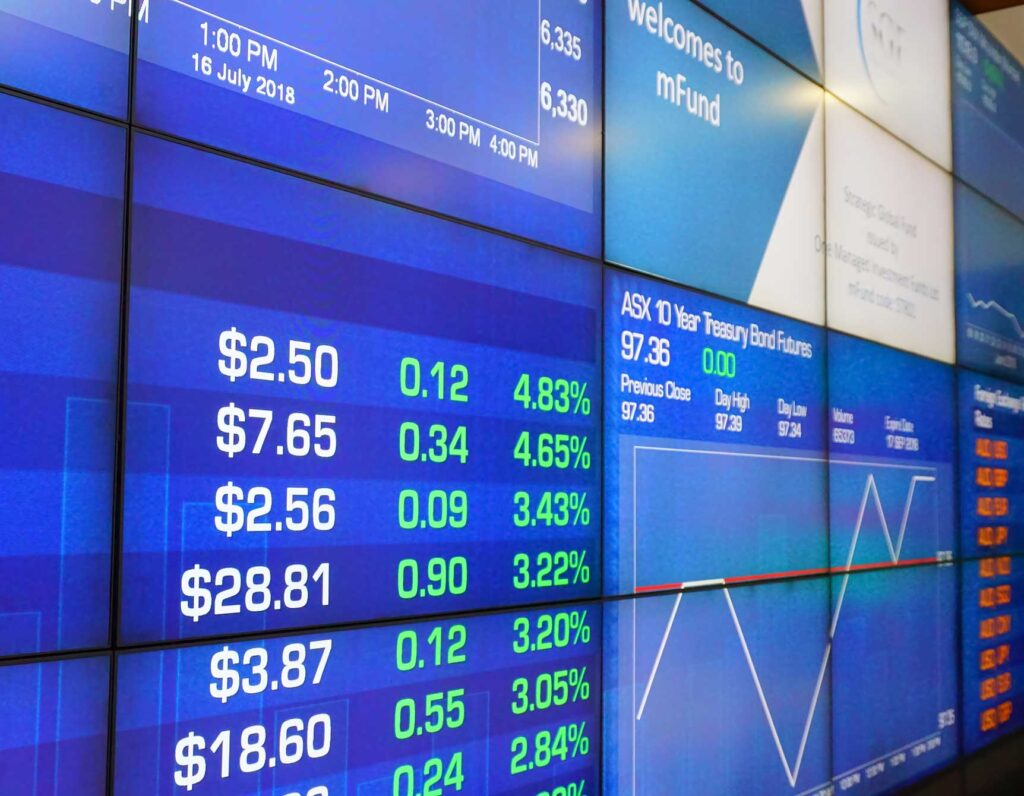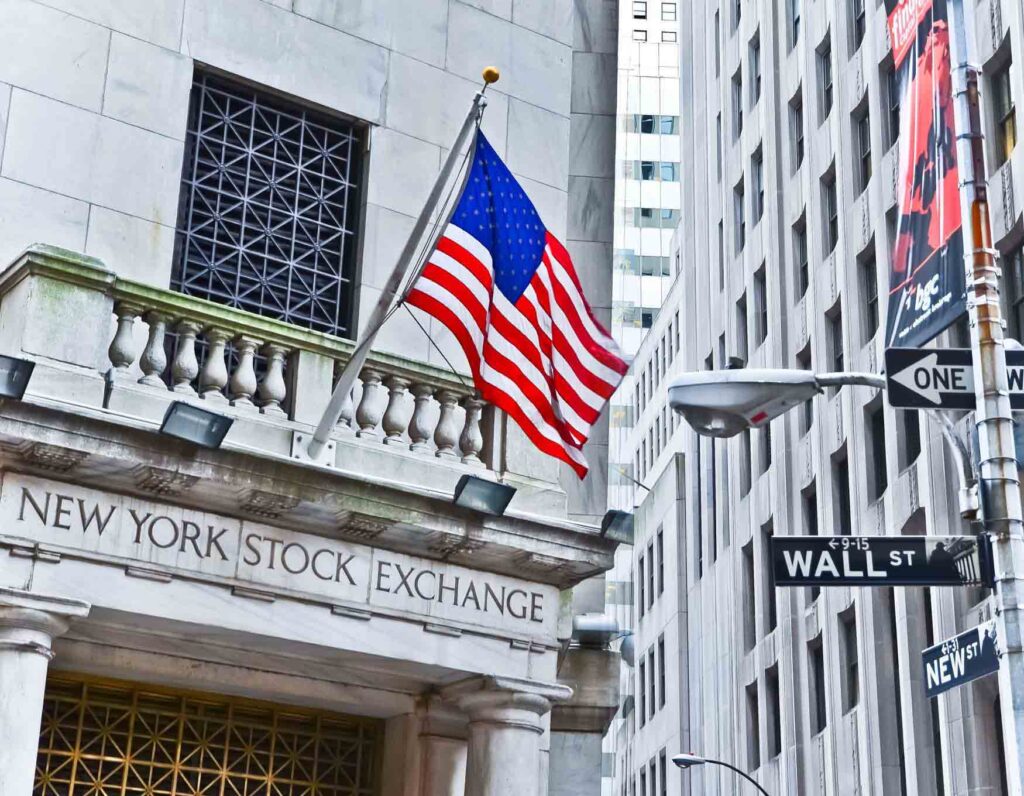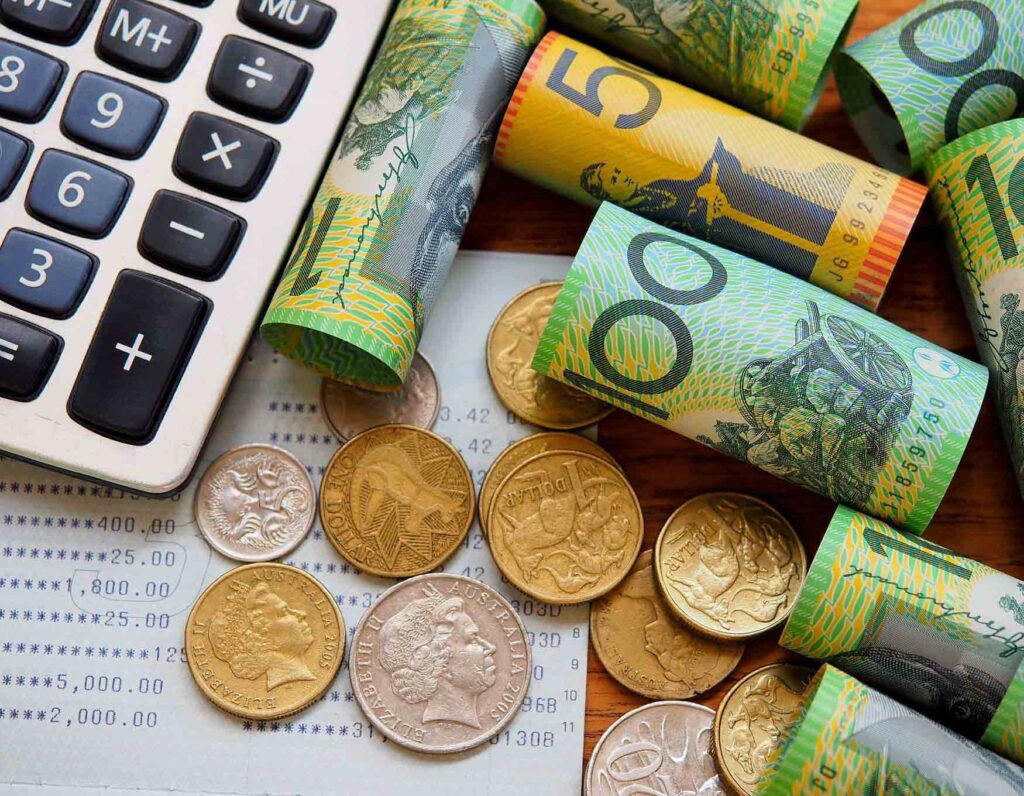Scan this article:
The share market can be a great place to build wealth but investment jargon can often leave first-time investors confused.
For example, what exactly is an ETF? And what does CGT mean?
To make your life easier, we’ve created a list of the most common investing jargon you’re likely to encounter. By the time you make it to the end, you’ll know your LICs from your REITs and your D/E ratios from your P/E ratios.
Investment terms
The full list is:
- All Ords
- Asset class
- ASX
- Bonds
- Bull & Bear Markets
- CGT
- Corporate action
- D/E ratio
- Diversification
- Dividend
- Dow Jones
- EBITDA
- ETF
- Inflation
- IPO
- LIC
- Liquidity
- Market capitalisation
- Market depth
- Managed fund
- NASDAQ
- NAV
- P/E ratio
- Portfolio
- Recession
- REIT
- S&P500
- Volatility
All Ords
The All Ordinaries is one measure, or ‘index’, of the Australian share market and how it is performing. It tracks the largest 500 companies listed on the Australian Securities Exchange (ASX). By comparing whether the All Ords is up or down over a period of time, an investor can quickly tell how these 500 companies have performed collectively – and by extension, Australian shares more broadly.
Asset class
Asset classes refer to different groupings of investments based on similar characteristics. For example, shares, property, bonds and cash are all different classes of assets. Each is grouped together on the basis that they tend to perform similarly with each boasting certain advantages and disadvantages.
Broadly speaking, asset classes fall into two categories – growth and defensive.
Shares and Property are examples of growth asset classes. These assets can be volatile but may provide a better chance of increasing the value of your investment over the long term.
Bonds and Cash are examples of defensive asset classes. These typically tend to provide more stable and lower investment returns in any given year.
ASX
Similar to how a physical market works, the ASX (Australian Securities Exchange) is Australia’s main market for buying and selling shares. For example, it matches buyers of one company with sellers, facilitating the transaction between the two parties.
Bonds
A bond is a bit like a term deposit. An investor loans money to an entity for a fixed period of time. When its time is up the entity returns the money plus interest. The most common type of bonds are government bonds and corporate bonds, referring to what kind of organisation is borrowing the cash.
Bear Market & Bull Market
While ‘booms’ and ‘recessions’ tell us what is going on in the economy, it’s helpful to be able to describe what’s going on in the share market as well.
‘Bears’ and ‘bulls’ are often used to talk about shares and current investor sentiment. Bears are negative with a ‘bear market’ describing a 20% (or larger) fall from recent highs. Bulls are positive, with a bull market describing a 20%+ rally.
Similarly, investors can be described as ‘bullish’ or ‘bearish’ depending on whether they’re currently optimistic or pessimistic about the market or a specific company.
CGT
CGT, or capital gains tax, is your tax obligation you pay when you sell an asset (such as shares) for a profit. If you hold an asset for less than 12 months, Australian investors have to pay a percentage of their profit to the Australian Tax Office (ATO).
This is usually charged at the same rate as their income. If they hold for more than 12 months, investors only have to pay tax on 50% of the profit.
Learn more about investment taxes here.
Corporate action
A corporate action is an event that changes the makeup of a public company’s shares. The most common types of corporate actions are splits, dividends, mergers and acquisitions, rights issues and spin-offs. Corporate actions generally need to be approved by the company’s board of directors and its shareholders.
D/E ratio
The D/E (debt-to-equity) ratio is one measure of a company’s health. It is calculated by dividing a company’s total liabilities (what it owes) by its total shareholder equity (how much has been invested into the business). The D/E ratio reflects a company’s ability to cover its debts should it experience financial difficulty.
Diversification
Diversification is an investment strategy meant to balance risk by spreading your money across various asset classes. Simply put, it’s a matter of not putting all of your eggs in one basket.
Importantly, it’s generally about investing in assets that aren’t correlated – that is investments that move up or down in value irrespective of each other.
Read our guide to diversification for more.
Dividend
A dividend is a payment of a company’s earnings to its shareholders.
For example, if a company is profitable but doesn’t have a great deal of room to grow it may choose to simply share its profits with investors. This is typically paid out as a dollar amount per share held. Companies may decide to pay a dividend on a quarterly, half yearly or annual basis.
Dow Jones
The Dow Jones refers to the Dow Jones Industrial Average, a famous stock index that includes 30 of the largest companies listed on stock exchanges in America.
EBITDA
EBITDA is an acronym that stands for earnings before interest, taxes, depreciation and amortisation. EBITDA can be used to measure a company’s overall financial performance. EBITDA is calculated in this way: Net income + Interest + Taxes + Depreciation + Amortisation.
A relatively high EBITDA can be a sign that company earnings are healthy while a low EBITDA figure can suggest it may be facing issues with its profitability and cash flow.
ETF
An ETF (exchange-traded fund) is a single fund that contains a basket of securities, such as stocks, bonds, commodities, real estate or other financial assets. They can be used to invest in multiple assets with just a single transaction. ETFs, like individual shares, can be bought and sold on an exchange like the ASX.
Inflation
In a nutshell, inflation refers to how the price of things change over time, with costs generally increasing over time. But inflation isn’t so much about the price of things rising as it is about the value of money – known as purchasing power – decreasing over time. As that happens, you naturally need more cash to buy the same things.
Read our full inflation explainer here.
IPO
Publicly-listed companies trade on share markets meaning that anyone with a broker like Superhero can easily buy and sell shares in them.
Of course, not all companies are publicly-listed but if they do one day decide to list on an exchange, they conduct an initial public offering (IPO). Suddenly a private company becomes a listed company and anyone can become a shareholder.
This is sometimes also referred to as a ‘public float’, a ‘public listing’ or ‘going public’.
For more, read our guide to IPOs.
LIC
A LIC, or listed invested company, is a company that manages money on behalf of investors, and uses that money to buy assets such as shares, bonds and property. If you want to invest in a LIC or cash out your investment, you do so by buying or selling shares in that LIC through the ASX.
Liquidity
Liquidity refers to the ease with which an asset can be converted into cash. For example, shares are generally considered quite liquid because they can be sold almost immediately. But property is illiquid, because it usually takes weeks or even months to sell.
Market cap
Market capitalisation is the total dollar value of a public company. A ‘market cap’ is calculated by multiplying a company’s share price by the total number of shares. If a company’s share price was $1 for example and it had 100 million shares, the market cap would be $100 million.
When investors talk about a listed-company’s current valuation, they are usually referring to its market cap.
Market depth
Market depth is based on the number of standing orders there are to buy and sell a particular stock. More orders means more market depth and the less likely that large trades will impact the share price.
Managed fund
A managed fund is an entity that manages money on behalf of investors, and uses that money to buy assets such as shares, bonds and property.
NASDAQ
The Nasdaq is a U.S. stock exchange and one of the largest in the world. A disproportionate number of the world’s largest tech companies are listed on it, including Apple, Microsoft, Amazon and Tesla.
NAV
A company’s NAV, or net asset value, is the value of its assets minus its liabilities – what it owns minus what it owes. The NAV is often expressed as a per-unit or per-share value to allow companies to be more easily compared.
P/E ratio
The P/E (price-to-earnings) ratio is calculated by dividing the price of a share by its earnings per share. Investors use P/E ratios to work out whether a company’s share price is overvalued or undervalued compared to other companies in the same industry.
Portfolio
A portfolio is a collection of investments held and managed by an investor. It may be made up of stocks, bonds, cash and other financial assets.
Recession
A recession describes a period where the economy is actually shrinking. It is defined as two consecutive quarters or more of negative economic growth. In other words, if a country is in a recession it means that their economy is in worse shape than it was six months (or more) ago. During a recession, the value of shares typically declines.
REIT
A REIT, or real estate investment trust, is a company that owns, operates or finances income-roducing properties, such as apartment buildings, cell towers, data centres, hotels, medical facilities, offices, retail centres and warehouses. Most REITs are publicly traded, like shares, which makes it easier and cheaper to invest in property.
S&P500
The S&P 500 is one of the most commonly-used market indexes. It is made up of the 500 largest U.S. companies listed across the New York Stock Exchange (NYSE), Nasdaq and Chicago stock exchange (called CBoe).
Volatility
The volatility of an asset refers to how wildly its price fluctuates. The wilder the fluctuation, the greater the volatility. And the greater the volatility, the greater the short-term risk.

Become a part of
our investor community
Why you should join us:
- Join free and invest with no monthly account fees.
- Fund your account in real time with PayID.
- Get investing with brokerage from $2. Other fees may apply for U.S. shares.
Read our latest articles
Make knowledge your superpower and up your skills and know-how with our news, educational tools and resources.



























